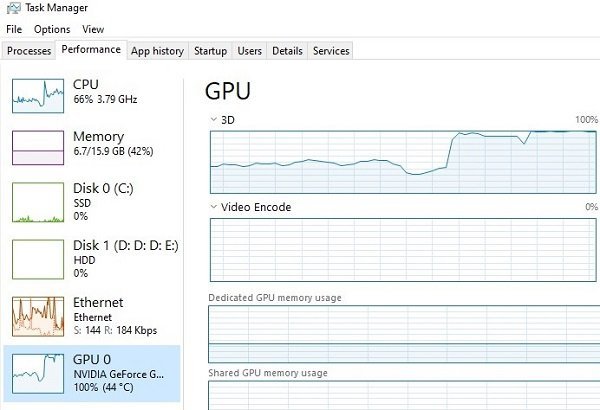Experiencing your GPU running at full capacity, hitting the 100% mark, can be a cause for concern. However, several factors contribute to this state, and understanding them is crucial. Here’s a step-by-step guide to help you diagnose and address why your GPU might be maxed out:
Monitor GPU Usage
Use monitoring software like Task Manager (Windows), Activity Monitor (Mac), or third-party tools like MSI Afterburner to track GPU usage in real-time. Identify which applications or processes are causing the GPU to run at maximum capacity.
Gaming or Graphics-Intensive Applications
During gaming or running graphically demanding applications like video editing software, 3D rendering programs, or cryptocurrency mining, the GPU often operates at maximum capacity to handle the workload efficiently.
Check for Background Processes
Certain background processes or applications might be utilizing the GPU extensively without your knowledge. Close unnecessary programs and background tasks to reduce GPU load.
Driver Issues
Outdated or faulty GPU drivers can cause the GPU to work harder than necessary. Ensure your GPU drivers are up to date by visiting the manufacturer’s website and downloading the latest drivers.
Overheating and Thermal Throttling
Overheating can lead to thermal throttling, where the GPU reduces its performance to prevent damage. Check if your GPU is overheating by monitoring its temperature. Clean the GPU and ensure proper ventilation to prevent overheating issues.
Power Supply and GPU Compatibility
Insufficient power supply or compatibility issues with the GPU can cause it to run at maximum capacity constantly. Ensure that your power supply meets the GPU’s requirements and that it’s properly connected.
Malware or Virus Activity
Malware or viruses running on your system might use the GPU resources extensively. Run a thorough antivirus scan to detect and remove any malicious software.
Optimize In-Game Settings
In gaming scenarios, high graphics settings might push the GPU to its limits. Lowering the graphics settings in games can significantly reduce GPU usage without compromising much on visual quality.
Hardware Issues
Faulty hardware components, such as a damaged GPU or PCIe slot, can force the GPU to operate at maximum capacity. If possible, test the GPU on another system or seek professional assistance for hardware diagnostics.
Monitor and Manage Future Usage
After identifying and addressing the cause of the 100% GPU usage, regularly monitor GPU usage to prevent future occurrences. Keep an eye on system updates, software changes, and hardware performance to maintain a balanced GPU load.
Final Thought:
A GPU running at 100% capacity can result from various factors, from intensive applications to hardware or software issues. By systematically troubleshooting and identifying the root cause, you can effectively address the problem, ensuring optimal GPU performance and preventing potential damage or system instability.
